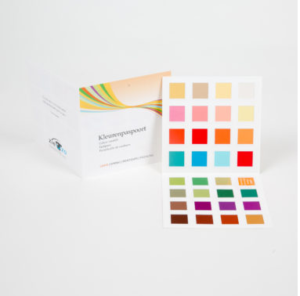Twelve Season Color Analysis
Home > 12 Season Color Analysis
What lead to the creation of the Twelve Season Color Analysis?
Four Season Color Theory
The 4 season color analysis exploded in popularity in the 80’s, largely due to Carole Jackson’s successful book “Color me beautiful”. Jackson’s book was based on the theory of Johannes Itten.
Itten categorized all colors into two sections:
– WARM <–> COOL
– LIGHT <–> DARK
This resulted in four harmonized groups of colors, each named after every season of the year. Interesting theory but it doesn’t work for everyone.
There is one fundamental aspect missing in this theory, namely “Chroma” or “Saturation”. The solution to this problem? Munsell’s 3-dimensional color theory.
Munsell’s color model demonstrates relationships between full-spectrum hues(color families) as well as tints (value) and shades (chroma). Chroma distinguishes strong, saturated colors from weak grayish ones.
High chroma = rich and clear
Low chroma = dull or muted
Adding “chroma” to the 4 season color theory created a more accurate 12 season color theory (also called flow theory)
How do these values work in the twelve season color theory
- HUE defines the color family. Each color is either warm or cool.
- VALUE designates the brightness of a color. Colors vary from dark to light.
- CHROMA defines a color’s saturation. True red is fully saturated and clear. Sage is considered a muted blue.
These three aspects of color determine six dominant characteristics:
warm – cool – dark (deep) – light – clear – muted (soft).
Find your season
In a large mirror, with good lighting, study yourself from the shoulders up. Leave your hair down unless it is dyed very differently from its natural color. In this case use a cap to hide your hair color. Wear no makeup. The features to focus on are your hair (if it’s your natural color), eyes and skin tone.
A. Determine your Dominant characteristic
The dominant characteristic is the most obvious trait you see in yourself.
Look for one of these 6 traits:
- DEEP: Strong, rich, dark coloring. Dark hair and eyes. Skin may or may not be dark.
- LIGHT: Very light. Light eyes and hair. Usually a natural blonde at some point in their lives.
- WARM: Yellow based skin color; no blue undertones. Red hair and green or blue eyes are common. Other warm hair colors are found, too.
- COOL: Blue based skin color; no yellow or golden undertones. Pink or rosy glow on the cheeks. Eyes are most often blue, but gray is common too.
- CLEAR: Bright, clear colors; no single face feature is muted or dusty. Eyes are often clear and sparkly.
- MUTED: Soft, dusty colors; nothing bright and overpowering. There is little contrast between the eyes, skin and hair.
B. Determine your Secondary characteristic
Next, you’ll decide if “warmer” or cooler “colors” look best on you. If “Warm” or “Cool” is already your dominant characteristic, decide whether “Clear” or “Muted” colors look best. After finishing these two steps, you will find your “season” in the table below.
| DOMINANT CHARACTERISTIC | SECONDARY CHARACTERISTIC | YOUR SEASON TYPE |
||
| Light | + | Warm | = | Light Spring |
| Clear | + | Warm | = | Clear Spring |
| Warm | + | Clear | = | Warm Spring |
| Light | + | Cool | = | Light Summer |
| Muted | + | Cool | = | Soft Summer |
| Cool | + | Muted | = | Cool Summer |
| Deep | + | Warm | = | Deep Autumn |
| Muted | + | Warm | = | Soft Autumn |
| Warm | + | Muted | = | Warm Autumn |
| Deep | + | Cool | = | Deep Winter |
| Clear | + | Cool | = | Clear Winter |
| Cool | + | Clear | = | Cool winter |
If performing your own color analysis was easy for you, you’re lucky! With the help of the 12-seasonal trendy color swatch you can start applying your newly gained knowledge on your next shopping trip. The card represents 30 of your best matching colors. No more buyer’s remorse when you use your personal color swatch on all your shopping trips. Save money, feel more confident and look your best with your new color guide!
Trendy 12-Seasonal Color Swatch
If you have difficulties or doubts while finding your season, let me help you define your season. With my help you will:
- Get your natural coloring explained
- Recognize your personal colors with ease
- Be able to adjust your daily wardrobe to your color palette
- Find the best color contrasts for you
- Get tips on how to optimize your look with accessories
- Find your most flattering make-up and hair colors
Personal Color Advice
Subscribe To My Blog
I am text block. Click edit button to change this text. Lorem ipsum dolor sit amet, consectetur adipiscing elit. Ut elit tellus, luctus nec ullamcorper mattis, pulvinar dapibus leo.
I am text block. Click edit button to change this text. Lorem ipsum dolor sit amet, consectetur adipiscing elit. Ut elit tellus, luctus nec ullamcorper mattis, pulvinar dapibus leo.


